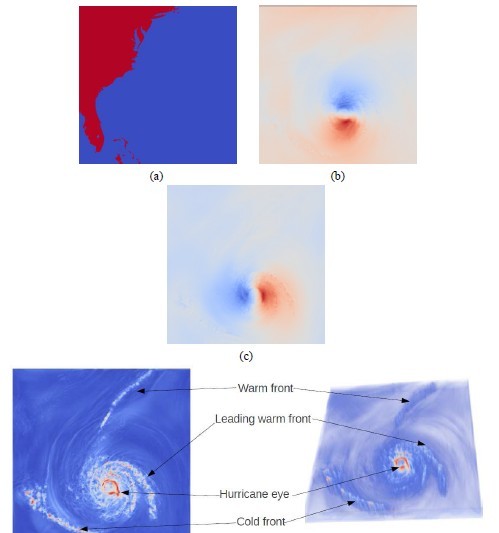Visual analysis of interactions in multifield scientific data.
Suthambhara NagarajAbstract
Data from present day scientific simulations and observations of physical processes often consist of multiple scalar fields. It is important to study the interactions between the fields to understand the underlying phenomena. A visual representation of these interactions would assist the scientist by providing quick insights into complex relationships that exist between the fields.
We describe new techniques for visual analysis of multifield scalar data where the relationships can be quantified by the gradients of the individual scalar fields and their mutual alignment. Empirically, gradients along with their mutual alignment have been shown to be a good indicator of the relationships between the different scalar variables.
The Jacobi set, defined as the set of points where the gradients are linearly dependent, describes the relationship between the gradient fields. The Jacobi set of two piecewise linear functions may contain several components indicative of noisy or a feature-rich dataset. For two dimensional domains, we pose the problem of simplification as the extraction of level sets and offset contours and describe a robust technique to simplify and create a multi-resolution representation of the Jacobi set.
Existing isosurface-based techniques for scalar data exploration like Reeb graphs, contour spectra, isosurface statistics, etc., study a scalar field in isolation. We argue that the identification of interesting isovalues in a multifield data set should necessarily be based on the interaction between the different fields. We introduce a variation density function that profiles the relationship between multiple scalar fields over isosurfaces of a given scalar field. This profile serves as a valuable tool for multifield data exploration because it provides the user with cues to identify interesting isovalues of scalar fields.
Finally, we introduce a new multifield comparison measure to capture relationships between scalar variables. We also show that our measure is insensitive to noise in the scalar fields and to noise in their gradients. Further, it can be computed robustly and efficiently. The comparison measure can be used to identify regions of interest in the domain where interactions between the scalar fields are significant. Subsequent visualization of the data focuses on these regions of interest leading to effective visual analysis.
We demonstrate the effectiveness of our techniques by applying them to real world data from different domains like combustion studies, climate sciences and computer graphics.[PDF]
